What it does
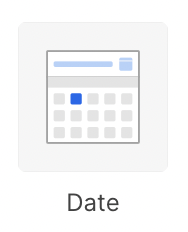

Single Date
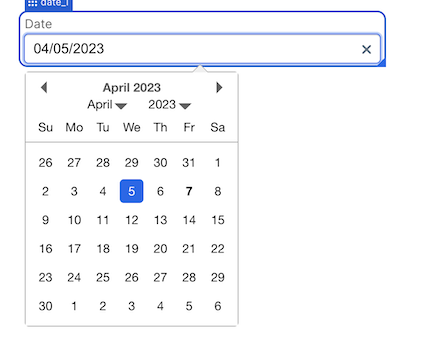
Date Range

Configuration
Single Date
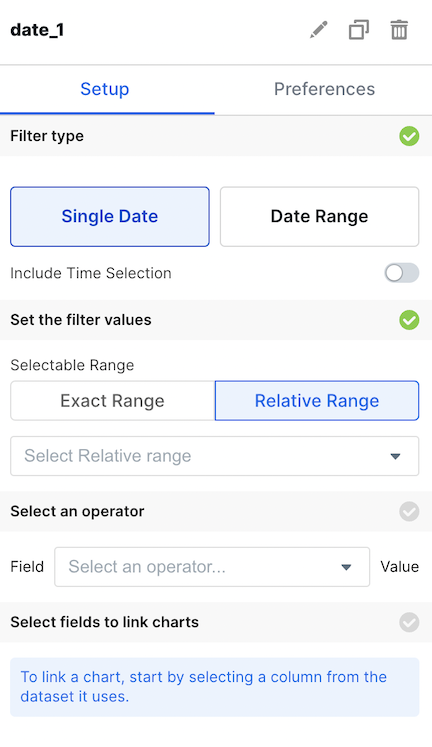
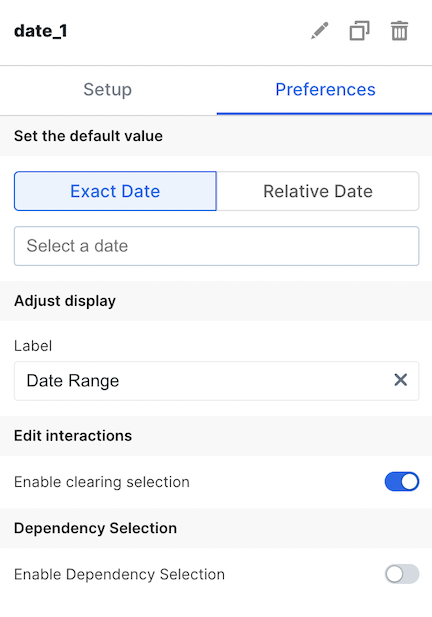
Single Date Basic Configuration
| Configuration Option | Description |
|---|---|
| Include Time Selection | Toggle to allow users to select a time with the date |
| Selectable Range | Define from which range users can select the single date value from. You can input exact dates (such as April 1 - April 20) or relative ranges (such as the last month). |
| Default Value | Define the default value on dashboard loads. |
| Label | Define the label of the component in the dashboard. |
| Enable clearing selection | Allow users to clear the input with an X mark. |
| Enable Dependency Selection | When enabled, you may create a dependency between this element and other elements on the dashboard. When this element is dependent on an element selected, it will be disabled until a value is selected by the user. |
Date Range
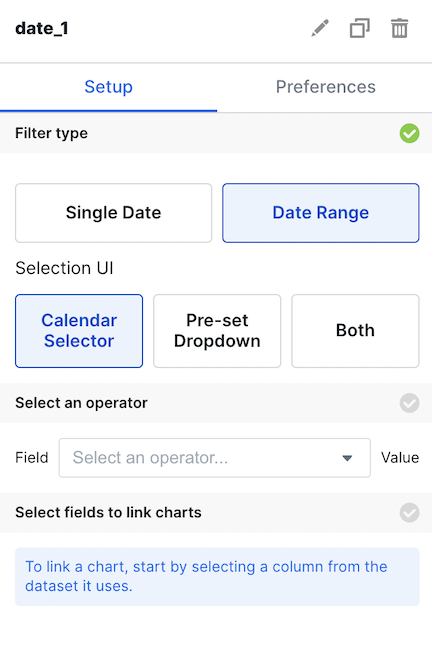
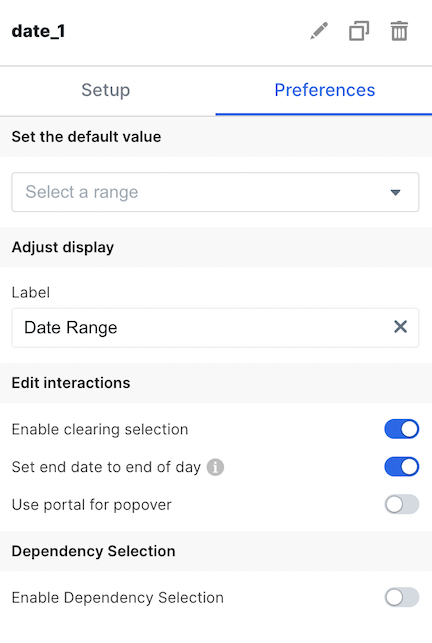
Date Range Basic Configuration
| Configuration Option | Description |
|---|---|
| Selection UI | Allow your users to select from a preset list of options (such as previous quarter), allow a custom range they define, or both. |
| Default Value | Define the default value on dashboard loads. |
| Label | Define the label of the component in the dashboard. |
| Enable clearing selection | Allow users to clear the input with an X mark. |
| Set end date to end of day | This toggle allows you to select the end date in the range to refer to the end of the day, which is useful for SQL queries. Otherwise, it will refer to the beginning of the day. |
| Use portal for popover | This toggle makes it so that the dropdown or multiselect components, when the dropdown portion is opened, won’t be cutoff when extending beyond a container or the embed frame. |
| Enable Dependency Selection | When enabled, you may create a dependency between this element and other elements on the dashboard. When this element is dependent on an element selected, it will be disabled until a value is selected by the user. |
Customizable Date Range Presets
If the pre-defined date ranges are insufficient (e.g. Today, Yesterday, Last 7 Days, etc.), you can create custom date range presets. Date range presets appear in the dropdown alongside the pre-defined date ranges.Usage
Configuration for Start Date / End Date:- Now - Today’s Date
- Plus - Add to today’s date (for future dates)
- Minus - Subtract from today’s date (for past dates)
- StartOf - Sets the time to 00:00:00
- EndOf - Sets the time to 23:59:59
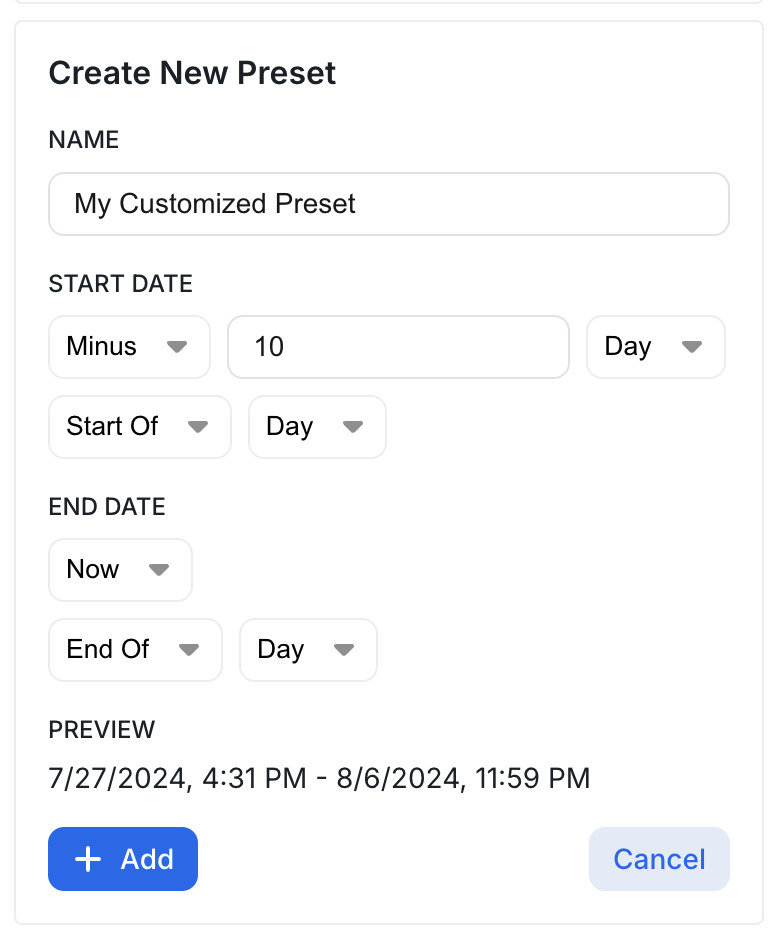
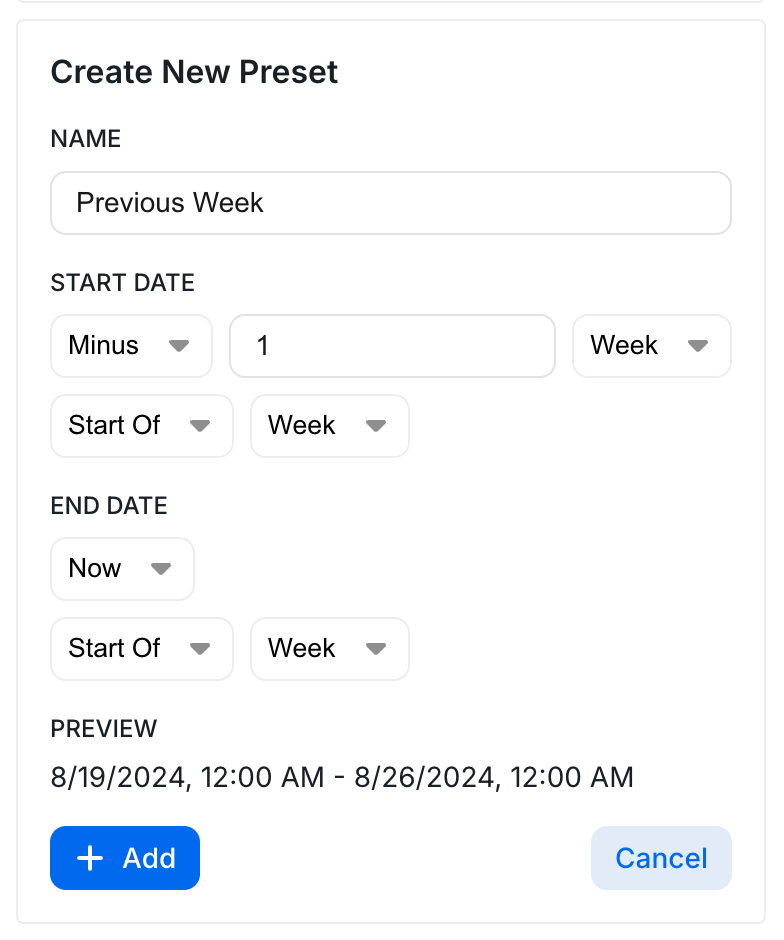
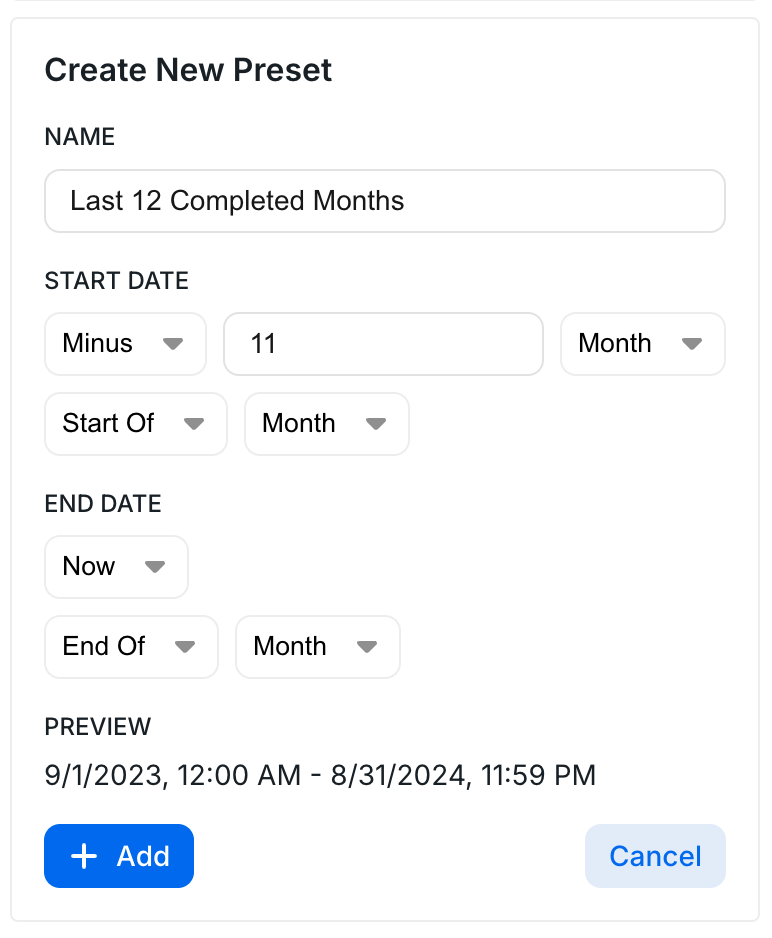
Variable Usage
To access the elements in the SQL editor, use the following syntax:For users connected to a BigQuery warehouse, you will need to cast the data
variable to the correct data type using the code below.
Single Date
Typical Usage
Casting to Date Type
Casting to Timestamp Type
Date Range
Date range pickers have two variables,startDate and endDate.
All date ranges are updated when the dashboard is loaded or refreshed, filters are re-applied, or the date range is changed.
These variables can be used in SQL queries like so: